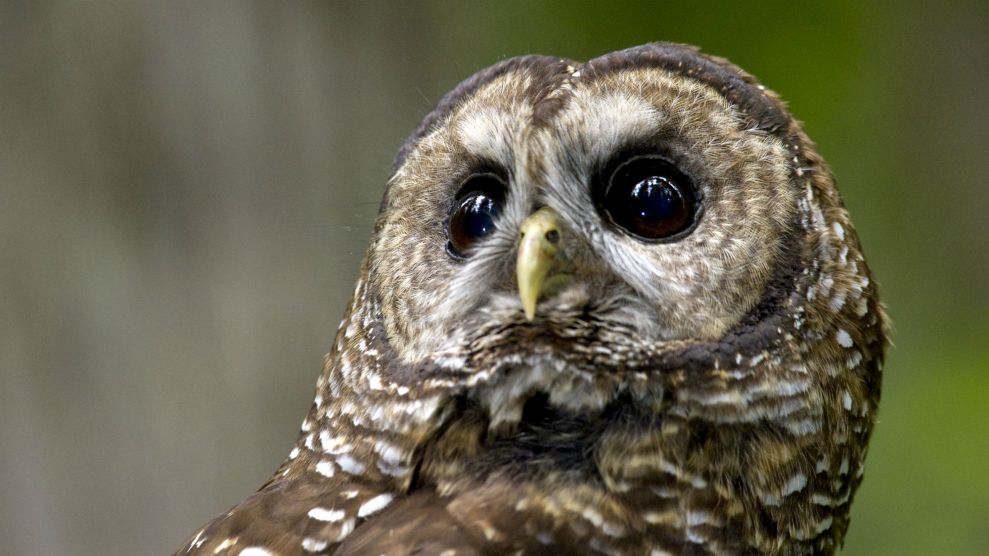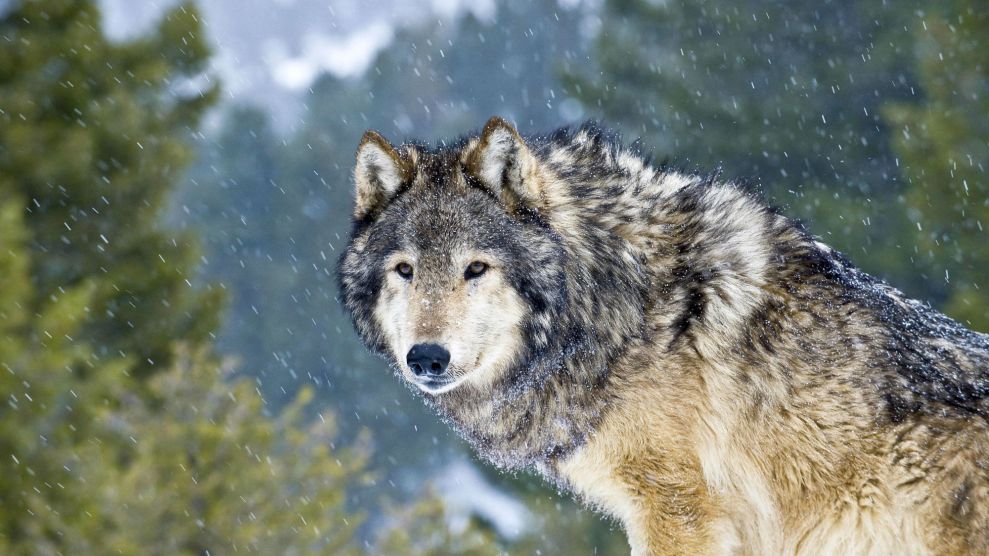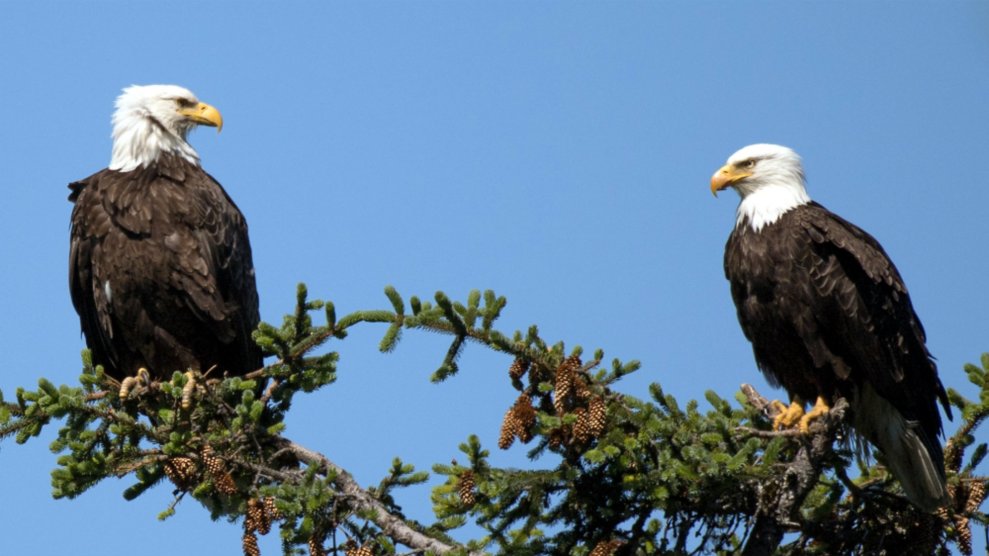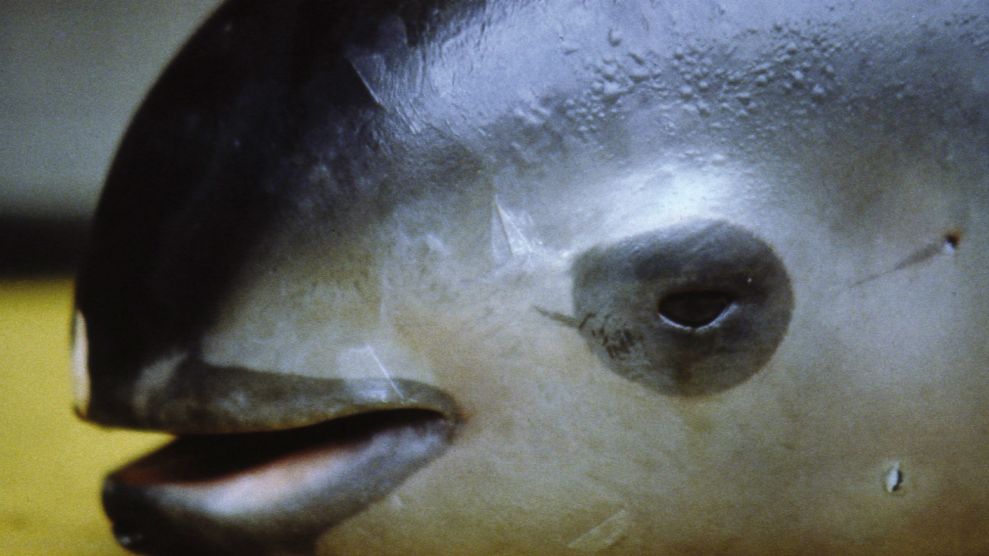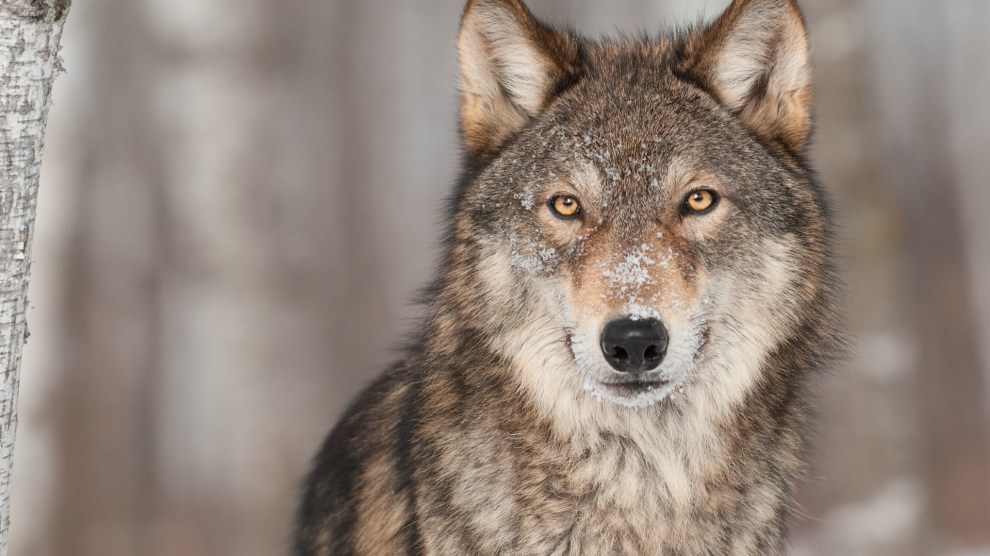
The Trump administration delisted the gray wolf from the Endangered Species Act last year.hkuchera/Getty
A version of this story originally published on March 1. It has been updated to reflect Deb Haaland’s confirmation on March 15.
During his presidency, Donald Trump’s record on protecting imperiled plants and animals was, in a word, abysmal. His administration opened public lands for oil drilling, loosened regulations on polluters, and gutted landmark environmental legislation, and was sued countless times for failing to safeguard species in trouble—like the rusty patched bumble bee, Mount Graham red squirrel, Houston toad, green sea turtle, and vaquita, the world’s rarest marine animal, among others. On average, the Trump administration granted federal protections to about six species per year—fewer than any other administration since the passage of the Endangered Species Act in 1973.
Now, environmental advocates are hoping that President Joe Biden’s pick to lead the Department of the Interior, Rep. Deb Haaland, a Democrat from New Mexico and the first Native American to serve as a Cabinet secretary, will undo Trump’s mess. “Following up on the Trump administration, it’s a tall order,” says Noah Greenwald, endangered species director at the Center for Biological Diversity. “He just did so much to undermine protections for endangered species and wildlife, that there’s just a lot of work to do.”
Haaland’s nomination was largely celebrated by environmental groups, and for good reason: In her two years in Congress, Haaland achieved a near-perfect rating from the League of Conservation Voters, co-sponsored the Green New Deal, and led a House effort to protect 30 percent of US land and ocean by 2030. “It’s clear that she’s a champion for the environment and a champion for environmental justice,” Greenwald says. While Haaland struck a bipartisan tone at her confirmation hearing in February, she pledged to be “a fierce advocate for our public lands” and to run a department that makes decisions “based on science.”
She’ll have her work cut out for her. The world’s plants and animals are in desperate need of help: Approximately 1 million species are at risk of extinction, scientists estimate—more than ever before in human history. So I was curious what a new Interior secretary could do that would have real, measurable impact. Here are some things environmental advocates say that Haaland will need to do to protect the most vulnerable species:
1. Reverse the Trump administration’s sweeping Endangered Species Act rollbacks
Over four years, Trump’s administration issued five rules that redefined how the Endangered Species Act is interpreted, Greenwald says. The first three came as a set in 2019 and made sweeping changes to how species are protected and the act is enforced. “It was really a broad base attack on the law,” says Rebecca Riley, legal director of the Natural Resources Defense Council’s Nature Program. The changes were so broad—for instance, allowing officials to “compile and present” economic factors in listing decisions—that most species listed under the act or waiting to be listed would be affected in one way or another, advocates told me at the time. Some of those species included the grizzly bear, moose, and monarch butterfly.
The two other rollbacks, which were enacted in the final months of Trump’s presidency, focused specifically on habitat. As Kristen Boyles, an attorney with Earthjustice whose work includes Endangered Species Act litigation, explains, the regulations “created more loopholes” for agencies to avoid issuing habitat protections—a change which “really cuts at the heart of the act,” Boyles says. “If [at-risk species] need anything, they need that habitat protected more than almost anything else.”
Environmental groups, some of which have sued the federal government over the rollbacks, are hoping all five rules will be reversed either through litigation or by putting new rules in place. As Interior secretary, “[Haaland] will have a lot of work ahead of her to restore the Endangered Species Act,” Riley says. “The Trump administration did everything they could to weaken the law.”
2. Reinstate protections for individual species
In addition to weakening the Endangered Species Act as a whole, the Trump administration denied federal protections (or stripped them entirely) for dozens of species, including, according to the Center for Biological Diversity, the walrus, Joshua tree, Florida Keys mole skink, wolverine, and the bi-state sage grouse (a population of the greater sage grouse, an odd western bird, and, I have to admit, a personal favorite).
Of all its species-specific decisions, delisting the gray wolf was perhaps the most controversial: For more than 45 years, the gray wolf had been listed under the act in the lower 48 states. Last year, however, Trump’s Interior Department delisted the gray wolf, in turn stripping it of its protections—pointing to the wolves’ “recovery” in Michigan, Wisconsin, and Minnesota. Environmental groups promptly challenged the move on both scientific and legal grounds. “If you list a species across the United States, it has to be recovered across the United States before you can say it’s actually recovered,” Boyles says. The Biden administration is currently reviewing that decision.
Unfortunately for many of these critters, re-listing a species under the Endangered Species Act isn’t as easy as it sounds. Federal listing decisions—both to list and delist—typically require a thorough scientific review, as well as input from outside experts and the public. It’s a process that could take a year or more. (Meanwhile, some states have taken matters into their own hands. Coloradans, for example, passed a first-of-its-kind measure in November to reintroduce wolves in the state.)
But for animals whose decisions haven’t been finalized, Boyles says, a possible option is to delay the effective date of those decisions. Take the northern spotted owl: In Trump’s final days, officials moved to cut its protected habitat by 3.5 million acres. The rule was set to go into effect on March 16. But late last month, Boyles says, Biden’s Interior Department said it will extend the effective date of the rule and reconsider it entirely.
In some cases where litigation is pending, Boyles says, the Biden administration may have the option to admit the federal government’s rules were legally flawed—paving the way to throw them out. “What they need to do is start working on those options,” Boyles says. “And they’ve not been able to do that because they haven’t had a secretary in place.”
3. Reform the key agency that enforces the Endangered Species Act
There is an enormous backlog of hundreds of species awaiting federal protection under the Endangered Species Act. Most of them have been on the waitlist since the Obama or Bush administrations, but the Trump administration, the Center for Biological Diversity alleged in a lawsuit last year, “consistently failed” to meet its own deadlines to address the backlog. Part of the reason for this, conservationists say, is a lack of funding. But another big reason, Greenwald argued at the time, was simple: politics. As I wrote last year:
Greenwald claims that the reason for the backlog of pending Endangered Species Act petitions comes down to “political interference at multiple levels,” especially at the Interior Department, where the Fish and Wildlife Service oversees the listing process. “There are these various political appointees in different positions [there] who have a very long record of opposition to the protection of endangered species, and I think they just end up hanging up decisions by asking questions: ‘Well, are we sure about the range of the species?’; ‘Are we sure this threat is really impacting them?’”
The influence of corporate interests at the Interior Department has also been heavily documented. As my colleague Rebecca Leber wrote in January, a report from consumer advocacy group Public Citizen found that past clients of Interior Secretary David Bernhardt, a former energy lobbyist, have spent $30 million lobbying the administration since Trump took office. “Under Trump, insiders have taken control over virtually every agency,” Public Citizen’s Alan Zibel, the report’s author, said at the time, “and the Interior Department is one of the far most egregious examples.”
At the time, the administration blamed the backlog in part on lawsuits from environmental groups like the Center for Biological Diversity, which has sued the Trump administration hundreds of times. “By continually filing lawsuits, frequent filers like CBD want to have the courts impose CBD’s priorities for species protection rather than Fish and Wildlife Service experts,” an Interior Department spokesperson told me in an email.
Greenwald hopes Haaland will “clean house” at the Fish and Wildlife Service, and appoint someone to lead the agency who will make decisions “based on the science and based on the law” and who “respects and appreciates the regulatory mission of Fish and Wildlife Service.” The right leader, advocates tell me, could help expedite listing decisions and cut down the enormous backlog.
4. Restore the Migratory Bird Treaty Act to full force
In 2017, Daniel Jorjani, then the top lawyer at Interior and a former Koch network employee, wrote a memo outlining how the Fish and Wildlife Service should enforce the Migratory Bird Treaty Act, a landmark 1918 law intended to protect migratory birds. In his memo, he wrote that the law only applies to direct killing—say, shooting a bird—but not to “incidental take,” Greenwald says. For instance, under Jorjani’s interpretation of the law, if an oil spill ends up killing tens of thousands of birds, the company at fault for the spill wouldn’t face any consequences. This memo essentially stated, “You spill oil, you kill birds, no problem,” Greenwald says. “It let industry totally off the hook for killing birds at a time when scientists are warning that bird populations across the board are in steep decline.” (According to a 2019 study, over the past 50 years more than a quarter of birds—around 3 billion!—have disappeared from North America alone.)
A coalition of environmental groups, including the Center for Biological Diversity and NRDC, successfully challenged this memo in court. But the Trump administration ignored the courts’ ruling and issued a rule that formalized Jorjani’s memo. Environmental groups again challenged the rule. Greenwald, for his part, is optimistic about the next Interior secretary: “We’re hoping that Deb Haaland will restore the Migratory Bird Treaty Act to its full strength,” he says.
5. Reestablish national monuments (and designate new ones!)
As a candidate, Biden pledged to restore two national monuments in Utah—Bears Ears and Grand Staircase-Escalante—that the Trump administration shrunk by a combined two million acres. So far, he’s indicated that he will follow through on those promises: On his first day in office, Biden tasked the Interior Department with reviewing Trump’s policies on the two monuments, plus Northeast Canyons and Seamounts Marine National Monument, which Trump opened to commercial fishing. As secretary, Haaland will oversee those efforts.
Restoring the national monuments dismantled under Trump, and establishing new ones, doesn’t only benefit the ecosystem, of course—much of the land contains sites of significance to Indigenous communities—but the monuments do provide large swaths of protected land for animals like the greenback cutthroat trout and Mexican spotted owl to roam.

